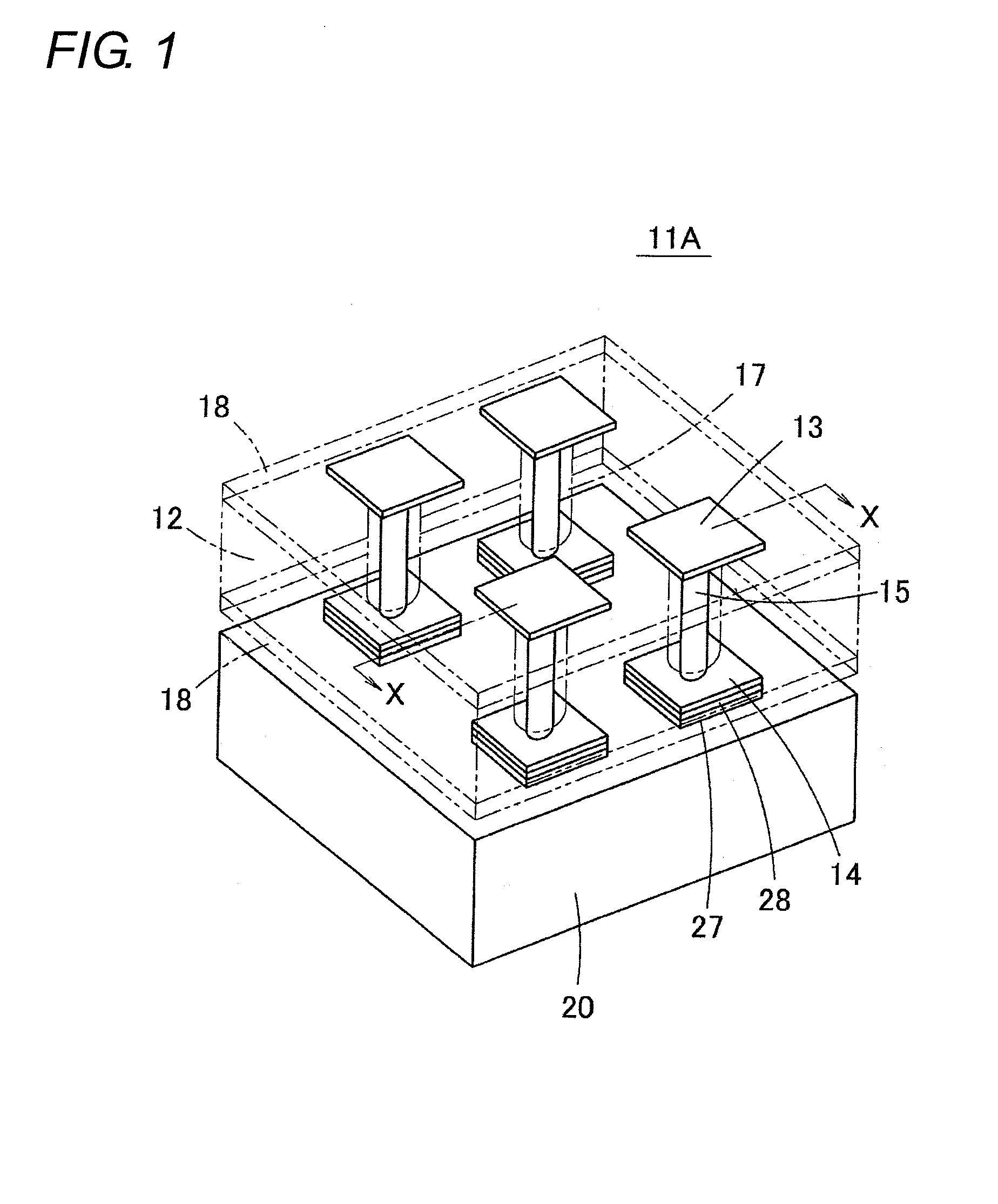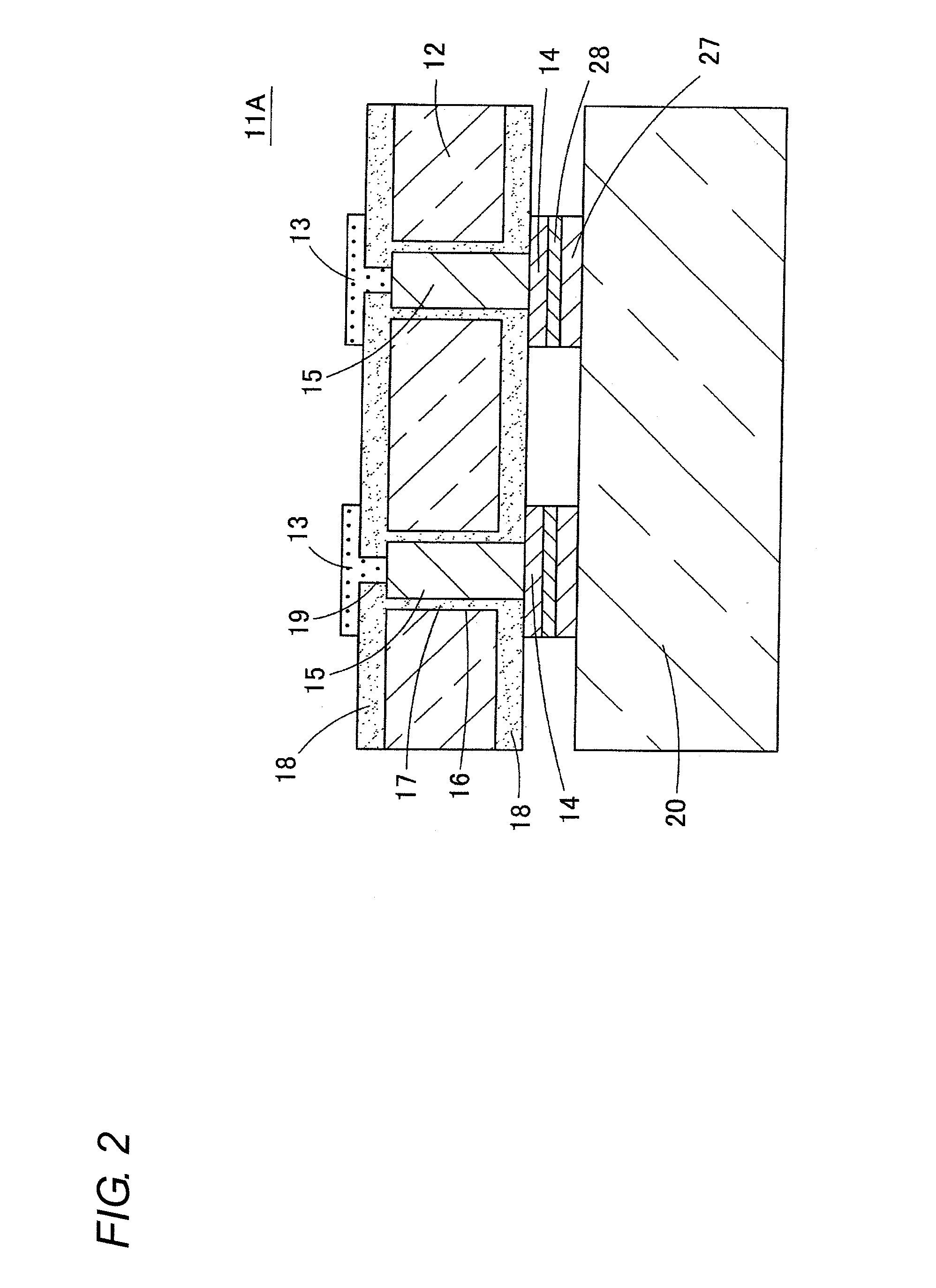Electrode portion structure
a technology of electrode portion and electrode, which is applied in the direction of basic electric elements, printed circuit manufacturing, solid-state devices, etc., can solve the problems of generating the disconnection between the electrode and the end face of the through-electrode b>15/b>, and is difficult to achieve, so as to reduce the resistance of the connection portion, improve the high-volume production property, and prevent the effect of generating the disconnection
- Summary
- Abstract
- Description
- Claims
- Application Information
AI Technical Summary
Benefits of technology
Problems solved by technology
Method used
Image
Examples
Embodiment Construction
[0049]Hereinafter, embodiments of the present invention will be described with reference to the drawings. In embodiments of the invention, numerous specific details are set forth in order to provide a more thorough understanding of the invention. However, it will be apparent to one of ordinary skill in the art that the invention may be practiced without these specific details. In other instances, well-known features have not been described in detail to avoid obscuring the invention. Additionally, the invention is not limited to the following embodiments, but various design changes can be made without departing from the scope of the invention.
[0050]FIG. 10 is an enlarged sectional view illustrating an electrode portion structure according to an embodiment of the invention. For example, the electrode portion structure is used in an electrode structure 11A illustrated in FIGS. 1 and 2 and an electrode structure 11B illustrated in FIG. 4. In the electrode portion structure of an embodim...
PUM
 Login to View More
Login to View More Abstract
Description
Claims
Application Information
 Login to View More
Login to View More - R&D
- Intellectual Property
- Life Sciences
- Materials
- Tech Scout
- Unparalleled Data Quality
- Higher Quality Content
- 60% Fewer Hallucinations
Browse by: Latest US Patents, China's latest patents, Technical Efficacy Thesaurus, Application Domain, Technology Topic, Popular Technical Reports.
© 2025 PatSnap. All rights reserved.Legal|Privacy policy|Modern Slavery Act Transparency Statement|Sitemap|About US| Contact US: help@patsnap.com



